
Music, Creativity & Design In the Berlin Underground
Amnesia Scanner, Nene H, Simon Kaiser and Zoe McPherson on multidisciplinary methods.

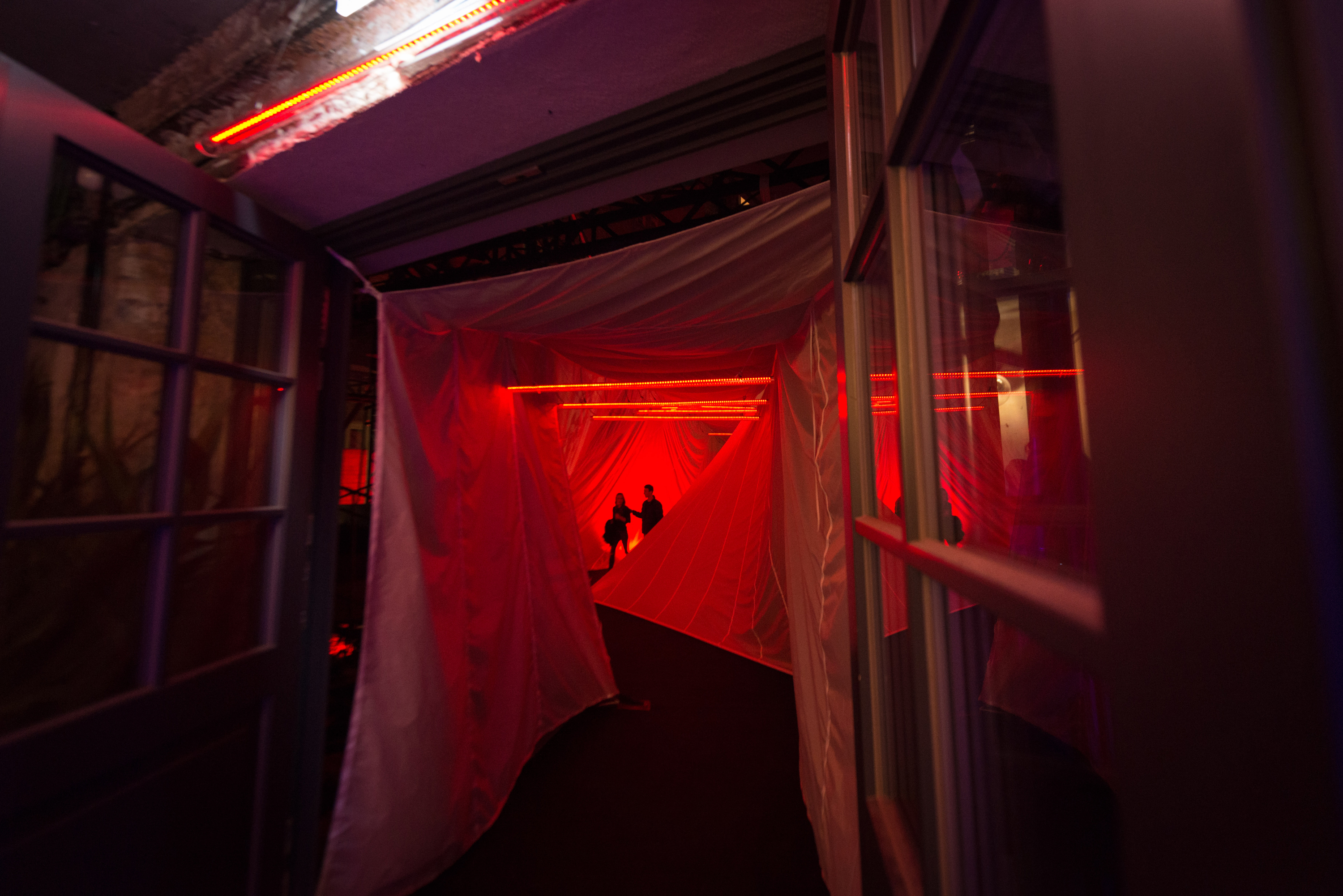
A flow of guests are making their way through the entrance of SCOPES driven by Porsche, once an abandoned theatre in Berlin’s central district of Mitte, temporarily transformed into a twenty-nine metre tunnel made from parachute fabric. This is a piece called Spectra, design by Johannes Offerhaus, working with sound designer Alex Kassian and light designer PRSMC. I see guests reach out for balance as they tread through this constantly shifting pathway as autumn evening wind throws the parachute into disorientating shapes around them. Next door is Stadtbad Mitte, the city’s most central public swimming pool; a little further away is the iconic Fernsehturm, the needle-like television tower, former communist symbol now a Deutsch Eiffel Tower immediately signalling where in the world you are. But here, where are we? We’re going through the Looking Glass.
SCOPES has transformed this century old building into a multi-sensory design experience, enabling creators to put forward their vision. Nearly 80 events took place during the month long run within this space. Tonight, Boiler Room are here, bringing along a curation of artists at the very cutting edge of their field. I’m here to experience the space, meet the artists, and find out how the design around them - be it SCOPES immersion or the city of Berlin itself, can influence and enable their vision.
The tunnel opens into a windowless room. Futuristic strip lights on the ceiling lead to the Concept Study Mission E - the first full electric Porsche. A group of people drape themselves across the iconic car’s sleek white bonnet taking selfies, several press their faces curiously against the tinted glass to see what lies inside. This room they’ve called MISSION E.
DJ and producer Nene H poses with a friend by the Porsche and snaps an inauspicious selfie. Although tonight upstairs she’ll play a set of techno as sleek and streamlined as the engineering she grabs a quick selfie by, Nene was raised from a young age as the classical pianist, Beste Edna. For her, school was no maths, no geography, just piano. I tell her this is most kids dream.
“Exactly!” She laughs. “I don't know shit about maths or whatever. I was lucky in a way, but also unlucky, because it puts you in a different perspective than being, lets say, an emotional musician, you're like a studied musician, it’s something you have to get out of when you're making your own music, you have to forget the things that you know.”
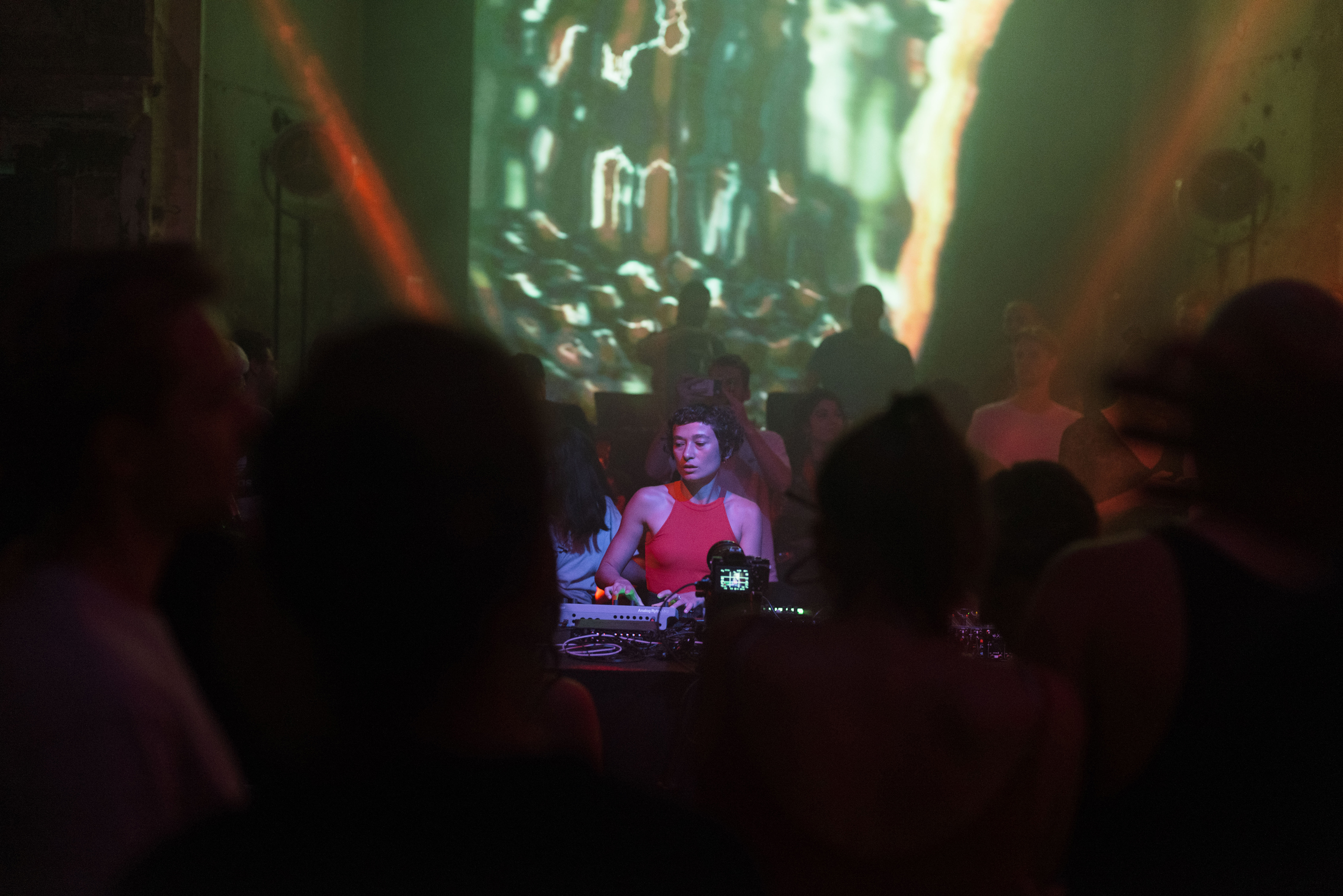
Recently, Nene H performed her transcendental techno within Berlin’s Funkhaus, the former GDR state broadcasting house, now a music and tech hub. Significantly, Funkhaus is another space where the design is built around the enabling of artistry. Here, the walls, floor and ceiling are designed as precise acoustic technology that pre-dates, and many say tops, contemporary software by half a century. However, Funkhaus is only one of many elements within the city that inspire Berlin’s electronic music scene.
“The nicest things happen when you don't expect them to,” she says, talking about how living in Berlin influences her creatively. “Like you go to one concert or one event and you don't expect it to be that awesome and you’re blown away. That’s for me the most special thing, because I get a lot of motivation from it, when I see people playing such great music, amazing music. In electronic music I have the feeling that I'm getting fed, you know?”
“There’s enough space for everyone,” says Simon Kaiser. Simon’s own party - TRADE, has grown into one of the city’s most respected experimental nights. Surrounded by the industrial fabrics of Mission E, we sit in a corner for a chat. “I’ve learned a lot through other people’s parties.”
“Berlin is way different from other bigger cities in electronic music.” Simon has the features of an Insta model and brims with the wide eyed enthusiasm of someone hardwired into a creative flow. He explains to me an etiquette at odds with the neoliberal du jour of other cities: “You shouldn't fight real hard for getting something, because it seems thirsty. In big cities, like New York, you have to do it. You have to go to the promoter all the time and be, like, ‘when can I play? I asked you for half a year now, when can I play?’ In Berlin if you do this you will never get booked. You kind of have to be like ‘Yeah I don’t really care’, just do your thing. And then I think it happens more organically and it doesn’t feel so forced.”
Later that night, Simon DJs upstairs in The Core, where the bare brickwork and cracked plaster remaining of a Weimar-era theatre space has been turned into an endlessly reflective immersion of mirrored surfaces, light and projections. He mercurially shifts in and out of Techno 4/4, stopping off seamlessly to pick up post-internet noise, touches of IDM and back in again, all the while taking the guests every step of the way with him. His recent mixtape, Techmess, echoes the TRADE principle of taking people on an unexpected journey.
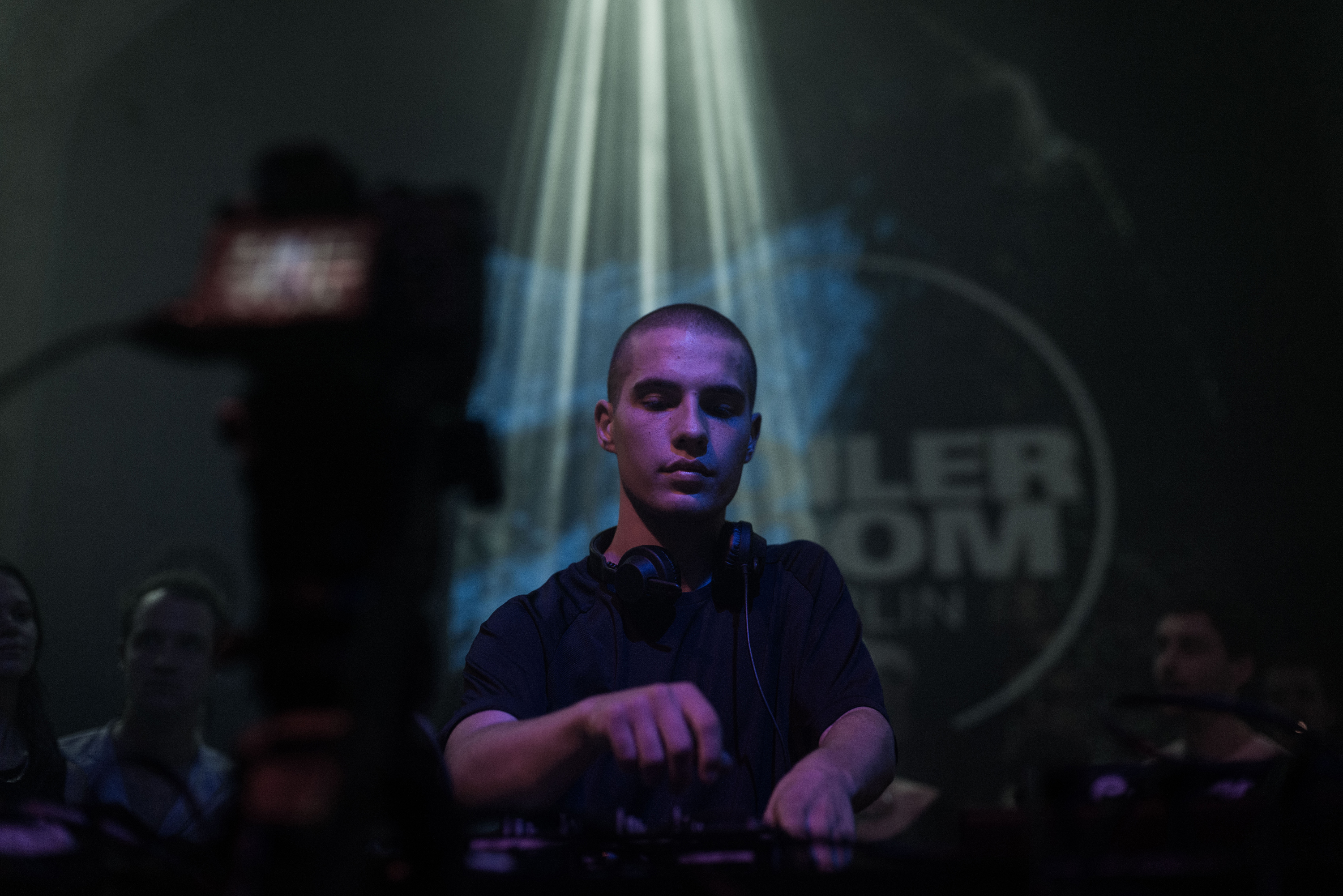
Passing through beyond the Concept Study Mission E, my feet tread onto moss. I’ve entered an living Mixed-Media-Installation called The Perception Of Change. Here are lichens and palm trees. I am inside a piece by art collective Wandelism, where nature replaces the sleek and the technical. I stroke my finger upon something that first appears like the kind of leather wall you might get at a members’ club in Mayfair, I judder as I’m informed its made of animal skin. I decide to follow a haunting, granulating sound, it leads me into the The Core.
On the stage, Zoe McPherson, microphone in one hand, the other controlling her desk, is manipulating her voice into trance-like digital grain, her AV partner Alessandra Leone loops images of choreographed dancers on the giant, vertical screen behind them. We are seeing the live representation of her AV album 'String Figures' - an ongoing trans-global art project fusing electronic sound, ethnomusicological research, video art and choreography.
“One of the main themes we have for the AV album is merging a more organic and more human feel to what is happening now, what we are within - network, digital, 3D all this.” She says over a cigarette after playing. I get the feeling this is the first time the pair have had a chance to just stop at the end of a frantic dash that began in Paris, twenty four hours ago, when she got the call to play.
Zoe draws on the primary focus of string figures in this project, an interest which began years earlier from discovering a book her grandmother owned on Inuit culture.
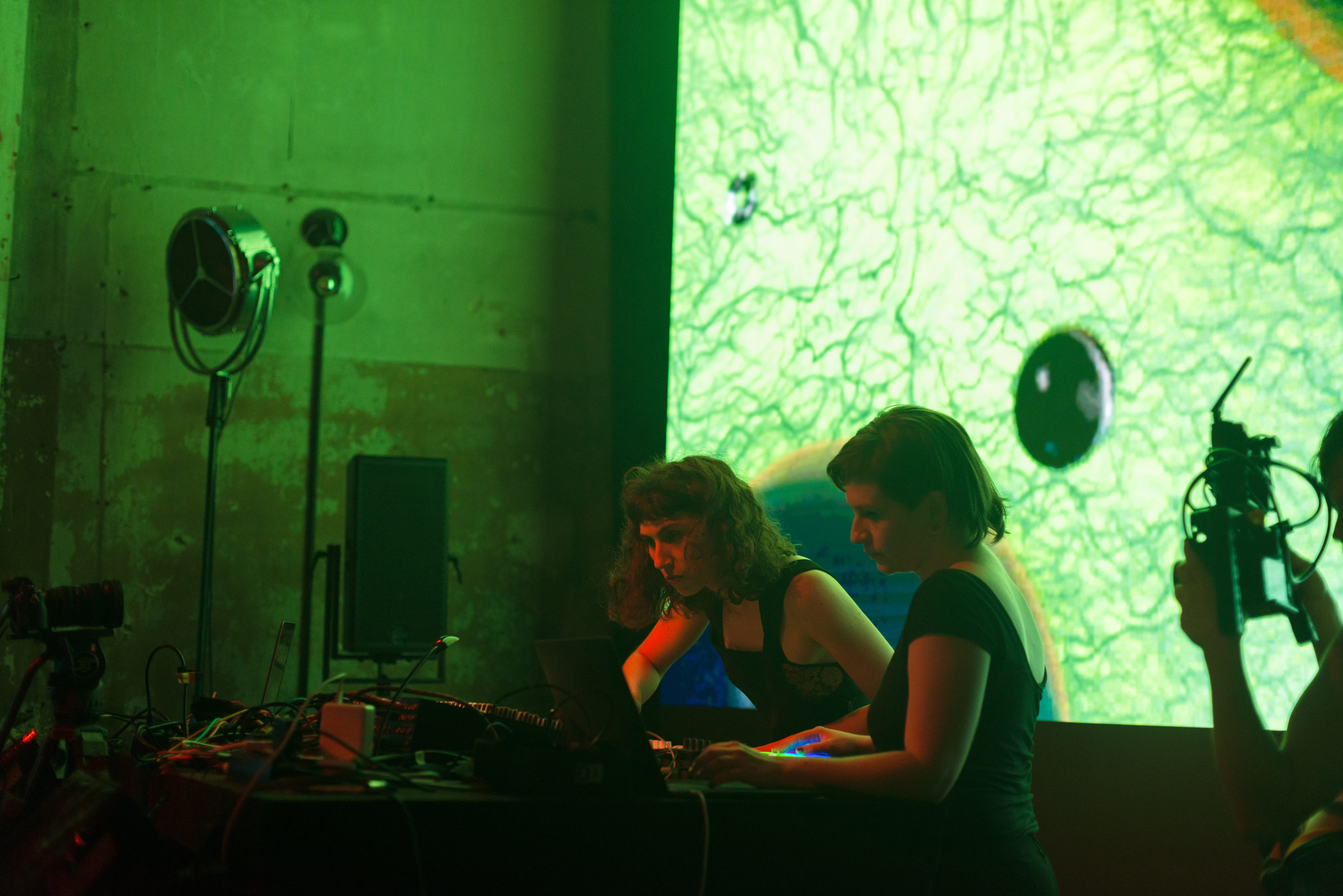
“It’s a spiritual practice, shamanic even, to help grow food. It has so many meanings those string figures, its meditative as well and this is how I make music.” She pauses. “Even if its hard techno, or industrial, it’s meditative. It’s something you get into and you get a bit lost in it, and I feel those strings that are changing, transitioning. Also, the words you use for them - looping, passing on, so many words are the same with composing music and also visual.”
Live tonight, Zoe and Alessandra’s multidisciplinary methods are an alchemy of old practices finding new technologies. I watch as string figures loop across the vertical phone-shaped screen that are then curiously mirrored in the raised phones of captivated guests: recording, looping and relaying their own experience.
I head into a gallery space curated by the Julia Stoschek Collection. I meet filmmaker & visual artist Britta Thie in a small room under a stairwell. On seating that, if it looks like if it’s been lifted from a shopping mall, it’s because it has. She tells me about this installation, and the film that inspired it - Kevin Smith's Mallrats.
“When I was first in that mall,” She tells me about the shopping centre in München in which the project grew out of, “I saw all these teenagers hanging out, sitting on these benches that we’re sitting on right now, charging their phones, like the whole mall is populated by these little islands of power plugs and seating and it reminded me of West Side Story, where you have all these different kind of cliques like huddling together on different benches styled in different styles.”
Britta’s work exists as much in pop culture as it does the gallery, she is conscientious of the patriarchal elements at play within the fine art world. When the Mallrats piece was first exhibited, she wanted to create a zone inclusive to young people: “I managed to get free entry for all young people until twenty and then also I installed free wifi and installed these kind of power banks.”
“I collaborate very closely with my partner who is also a musician who's playing tonight, who composed the soundtrack of this film.” Britta’s partner, Ville, is one half of Amnesia Scanner. “I always love working very closely with musicians in my films because films are also about rhythm.”
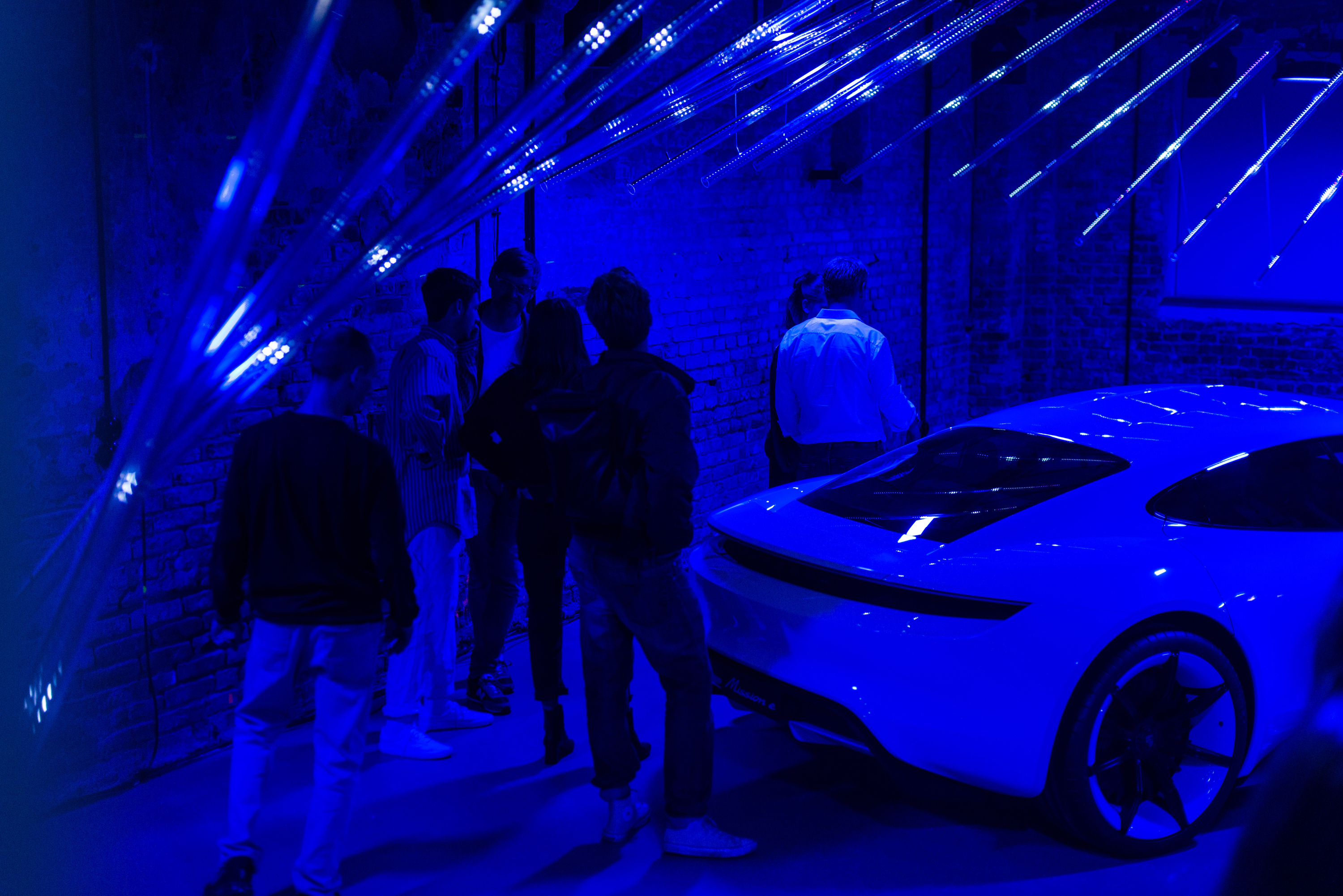
Back upstairs, Amnesia Scanner have taken to that stage. Dancers hold up phones to capture something within the arctic snowstorm of strobe blasting from the stage. Somewhere up there, two humans can occasionally be glimmered at the controls. Like on their PAN-issued album, Another Life, where moments of pop structure and even EDM energy seep into the mix, here also, moments of recognisable human life flicker through the layer upon layer of monolithic technology. Here, the human is often submerged within tech.
“I don't think we’re so interested in tech as the main focus but more like how tech is shaping our lives” Says Ville Haimala, the Britta-half of Amnesia Scanner. We’re sat in a futuristic Penthouse that sits on top of the theatre, as other-worldly and sci-fi as Britta’s mall is. Ville and his Amnesia Scanner partner Marti Kalliala both seem a little tired in that way instantly recognisable to anybody involved in any aspect of performing on a stage - where the time around it is swallowed up in a frantic navigation of logistics and hoping there’s enough time to grab something to eat in between. Seeing the two slightly frazzled guys sat in front of me, I feel drawn to this most human trait behind a project that is so immersed within technology.
“It’s not necessarily about technology,” Marti explains the Amnesia Scanner approach. “But it’s like an expression of our contemporary existence, of course, a lot of our experiences are mediated through technology and framed by technology, like, limited by our technology.”
The duo met whilst working at the same architectural office in Helsinki, and slowly birthed Amnesia Scanner through an opaque approach, using mixed media without an immediately identifiable core. Ville explains: “Like, was it an artwork or was it visual art or was it music or was it some strange internet forum?”
“This project is very little about us and much more this kind of world that we are building.” Ville explains. “So we’re sometimes almost spectators ourselves in this thing that we do, for example our live show is very much all about that, that we’re kind of creating this world in the room in real time instead of us taking the spotlight.”
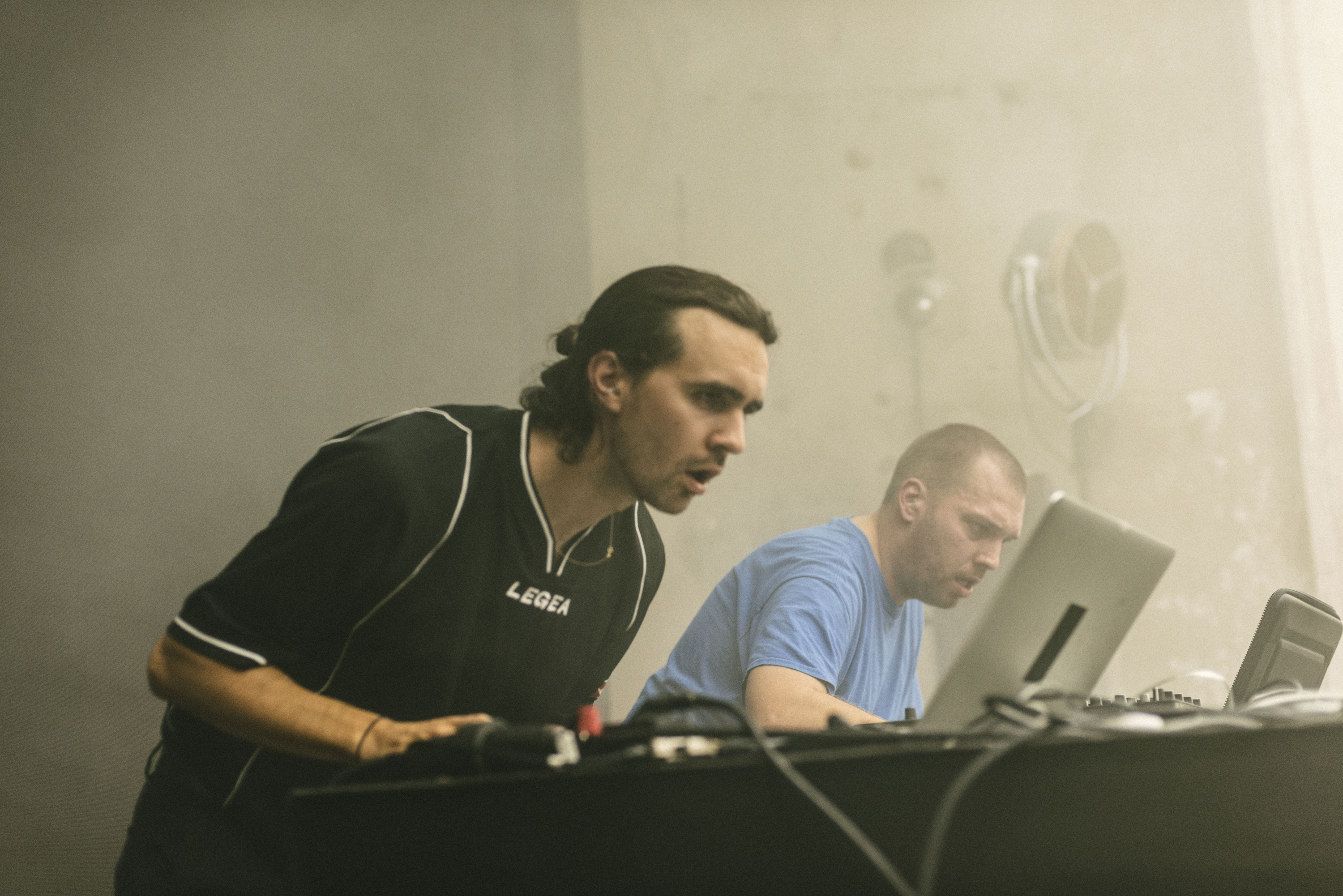
In this way, Amnesia Scanner echo our contemporary existence. Marti says: “You have this experience of everything being a feed and everything being a stream rather than being divided into these defined moments or works, there’s definitely a sense of time that we live with now.”
Once again, and throughout tonight, I feel a constant contrast all around between the raw and the sleek, between the natural and the digital. It is in this building - the crumbling edges of a hundred and thirteen years, it’s in the temporal nature of the already eroding moss and lichen and the technologies that have enabled this space to enable artists and inspire dialogue over one month. SCOPES has created an eco-system, hidden from the outside world, through fabrics - glass, mirror, stone/marble, leather, metal and paint. Tonight, I witness artists passing on organic experiences through digital designs and for a second, I’m aware of the possibility somebody I know in another continent has noticed my inadequate mid-week techno dancing out of all the digitised heads caught in the flurry of a Boiler Room stream.
Written by Paul Hanford
Photography courtesy of Camille Blake
































